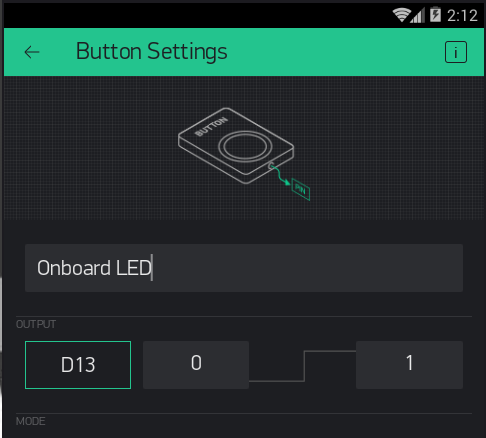Here are direct links to my code:
This is the central unit that operates the central heating (and failed after 15m):
https://www.dropbox.com/s/x5mv1yanbdxxxh7/HEATING_Central.ino?dl=1
(note that it now works due to placing pinMode(HEATER_RELAY_PIN_CV, OUTPUT); in front of every pin operation)
This is the code for the 4 units that operate the valve and pump (and also fails after 15m):
https://www.dropbox.com/s/d72c6nck4nxeqn4/Heating_Relay.ino?dl=1
(note that this one now works due to this line:
#define BLYNK_NO_BUILTIN // Disable built-in analog & digital pin operations)
And in case its required, here the code of the thermostats that tell the relays units to either turn on or off:
https://www.dropbox.com/s/mxikne06y38qyoq/Heating_Thermostat.ino?dl=1
and finally my header file, which I’m not gonna share as that contains all the sensitive stuff, but here’s a copy:
#include <BlynkSimpleEsp8266.h> // Blynk
#include <ArduinoOTA.h> // OTA
#include <U8g2lib.h> // OLED
#include <BME280I2C.h> // Sensor
#include <ESP8266httpUpdate.h> // Http OTA update
#include <Wire.h> // I2C communication (Sensor)
#include <WidgetRTC.h> // RTC Widget
//#include <ESP8266WiFi.h> //
//#include <ESP8266mDNS.h> //
//#include <ESP8266HTTPClient.h> //
//#include <WiFiUdp.h> //
//#include <TimeLib.h> //
#define BLYNK_PRINT Serial // redirect blynk messages like "Connecting to..." to Serial.print()
//#define BLYNK_HEARTBEAT 20 // defaults to 10s.
//#define BLYNK_TIMEOUT_MS 5000UL // defaults to 2000UL
//when going to production comment out blynk_print and uncomment the following lines:
//#define BLYNK_NO_BUILTIN // Disable built-in analog & digital pin operations
//#define BLYNK_NO_FLOAT // Disable float operations
// #define BLYNK_USE_128_VPINS // no longer required
#define BLYNK_GREEN "#23C48E" // RR GG BB
#define BLYNK_BLUE "#04C0F8"
#define BLYNK_YELLOW "#ED9D00"
#define BLYNK_RED "#D3435C"
#define BLYNK_DARK_BLUE "#5F7CD8"
#define BLYNK_ORANGE "#FFA500"
#define RED "#FF0000"
#define WHITE "#FFFFFF"
#define BLACK "#000000"
#define YELLOW "#FFFF00"
#define PURPLE "#9400D3"
#define INDIGO "#4B0082"
#define BLUE "#0000FF"
#define GREEN "#00FF00"
#define GRAY "#919191"
#define GREY "#C0C0C0"
#define ORANGE "#FFA500"
#define CCENTRAL "#000000" // BLACK
#define CBCKCENTRAL "#919191" // GRAY
#define CLIVING "#23C48E" // BLYNK_GREEN
#define CSTUDY "#9400D3" // PURPLE
#define CBATH "#d68a00" // DARK_ORANGE
#define CBED "#d68a00" // DARK_ORANGE
#define CLAUNDRY "#d68a00" // DARK_ORANGE
#define CARTHUR "#d68a00" // DARK_ORANGE
#define CCASPER "#04C0F8" // BLYNK_BLUE
const char* ssid = "";
const char* password = "";
const char* fwUrlBase = ""; // used for http OTAbool HTTP_OTA = false;
IPAddress server(192,168,1,90);
const int port = 8080;
#define auth_CENTRAL ""
#define auth_T_LIVING ""
#define auth_T_STUDY ""
#define auth_T_BATH ""
#define auth_T_BED ""
#define auth_T_LAUNDRY ""
#define auth_T_ARTHUR ""
#define auth_T_CASPER ""
#define auth_R_FLOOR_1 ""
#define auth_R_FLOOR_2 ""
#define auth_R_FLOOR_3 ""
#define auth_R_FLOOR_4 ""
// pins used by therm and relay
#define channel0_PIN V0
#define channel1_PIN V1
#define channel2_PIN V2
#define channel3_PIN V3
#define channel4_PIN V4
// pins used by thermometers
#define currentT_PIN V10
#define currentH_PIN V11
#define currentP_PIN V12
#define heatOn_PIN V13
#define maintOn_PIN V14
#define error_PIN V19 // sensor error
#define OLED_PIN V20 // slider for oled contrast
#define timer1_PIN V21 // timer input widget
#define timer2_PIN V22 // timer input widget
#define timer3_PIN V23 // timer input widget
#define timer4_PIN V24 // timer input widget
// pins used by CENTRAL and THM
#define targetTType_PIN V31 // pin where the current targetTtype is stored (home, away, vacation)
const int setTargetT_PIN[3] = {V32, V33, V34}; // 0=@home; 1=@night; 2=@vacation
const String setTargetTCOLOR[3] = {BLYNK_GREEN, BLYNK_DARK_BLUE, BLYNK_ORANGE}; // 0=@home; 1=@night; 2=@vacation
#define homeTargetT_PIN V32 // only available at THM can't use the array in a case statement, hence the seperate definition as well.
#define nightTargetT_PIN V33 // only available at THM
#define vacationTargetT_PIN V34 // THM and CENRTAL
#define showTargetT_PIN V35 // only available at THM //value varies depending on targetTType (so either home/night/vacation
#define targetTMIN_PIN V36 // only available at THM
#define targetTPLUS_PIN V37 // only available at THM
// pins used by CENTRAL
#define CV_PIN V10 // turn CV on/off
#define SHOW_TIME_PIN V11 // show a clock
// pins used by ALL
#define TERMINAL_PIN V30 // used to show the terminal outputs
#define version_BCK_PIN V38 // shows current version of firmware. this pin is exclusively used by ESP_BCK_CENTRAL
#define OTA_BCK_update_PIN V39 // on=check for update on server this pin is exclusively used by ESP_BCK_CENTRAL
#define OTA_update_PIN V40 // on=check for update on server
#define offline_PIN V41 // Every unit uses the pin to check offline status of that unit
#define version_PIN V42 // shows current version of firmware
#define wifiSignal_PIN V43 // button to turn on wifi signal checker (in terminal)
#define TERMINALBCK_PIN V44 // used to show the BCK terminal outputs
int relayOn_PIN[7] = {V51,V52,V53,V54,V55,V56,V57}; // additional check whether the pin is actually set
// Note that there is no mem difference between const and define, however define is more bug prone!
const int SCL_PIN = D5;
const int SDA_PIN = D6;
const int RES_PIN = D1;
const int DC_PIN = D2;
const int BUTTON_UP_PIN = D7; // the pin that the pushbutton is attached to
const int BUTTON_DO_PIN = D8; // the pin that the pushbutton is attached to
// const int T_SENSOR_PIN = A0; // ADC !! (only this pin = (A0)
const int TIME_RUN_FUNCTIONS = 1000 * 60; // Run all 1 minute functions
String displaycurrenttimepluswifi;
///////////////////////////////////VARIABLES////////////////////////////////////////////////
///FUNCTIONS // Usually I would move this to a cpp file, but I get numerous errors so I gave up and placed them here.
/////////////////STRING///////////////////////////////////////////////
String floatToString(float val, int decimalplaces){
String value(val, decimalplaces);
return value;
}
/*String getMAC(){//return mac address of unit
uint8_t mac[6];
char result[14];
snprintf( result, sizeof( result ), "%02x%02x%02x%02x%02x%02x", mac[ 0 ], mac[ 1 ], mac[ 2 ], mac[ 3 ], mac[ 4 ], mac[ 5 ] );
return String( result );
}*/
/////////////////STRING///////////////////////////////////////////////
/////////////////OTA//////////////////////////////////////////////////
void initOTA(char ESP_NAME[]){
Serial.print("EPS Name: ");
Serial.println(ESP_NAME);
ArduinoOTA.setHostname(ESP_NAME);
// ArduinoOTA.setPassword("admin");
ArduinoOTA.onStart([]() {
String type;
if (ArduinoOTA.getCommand() == U_FLASH)
type = "sketch";
else // U_SPIFFS
type = "filesystem";
// NOTE: if updating SPIFFS this would be the place to unmount SPIFFS using SPIFFS.end()
Serial.println("Start updating " + type);
});
ArduinoOTA.onEnd([]() {
Serial.println("\nEnd");
});
ArduinoOTA.onProgress([](unsigned int progress, unsigned int total) {
Serial.printf("Progress: %u%%\r", (progress / (total / 100)));
});
ArduinoOTA.onError([](ota_error_t error) {
Serial.printf("Error[%u]: ", error);
if (error == OTA_AUTH_ERROR) Serial.println("Auth Failed");
else if (error == OTA_BEGIN_ERROR) Serial.println("Begin Failed");
else if (error == OTA_CONNECT_ERROR) Serial.println("Connect Failed");
else if (error == OTA_RECEIVE_ERROR) Serial.println("Receive Failed");
else if (error == OTA_END_ERROR) Serial.println("End Failed");
});
ArduinoOTA.begin();
Serial.println("OTA Ready");
Serial.print("IP address: ");
Serial.println(WiFi.localIP());
}
/////////////////OTA//////////////////////////////////////////////////
//////////////////////// FOTA////////////////////////////////////////
String checkForUpdates(char ESP_NAME[]) {
String ESP = String(ESP_NAME);
String fwURL = String( fwUrlBase ) + ESP + ".bin"; // e.g. ESP_CENTRAL.bin
String oneLine = ""; // used for returntxt and serial line
String returnTxt = "HTTP FIRMWARE UPDATE FOR: " + ESP + "\n"; // in case of error return string which then can be ported to terminal
Serial.println( returnTxt );
t_httpUpdate_return ret = ESPhttpUpdate.update( fwURL ); // IF successful, ESP resets after this line
//t_httpUpdate_return ret = ESPhttpUpdate.update("https://username.github.io/firmware/blink.bin", "", "fingerprint_goes_here");
switch(ret) { // In case of failure....
case HTTP_UPDATE_FAILED:
oneLine = "HTTP_UPDATE_FAILED Error "+ String(ESPhttpUpdate.getLastError()) + ": " + ESPhttpUpdate.getLastErrorString().c_str() + "\n";
Serial.print(oneLine);
returnTxt += oneLine;
break;
case HTTP_UPDATE_NO_UPDATES:
oneLine = "HTTP_UPDATE_NO_UPDATES\n";
Serial.print(oneLine);
returnTxt += oneLine;
break;
}
return returnTxt;
}
//////////////////////// FOTA////////////////////////////////////////
other timing issues
No timing isues, although Blynk does start to fail in updating digital reads also ‘after a while’, but I haven’t fully investigated this issue so haven’t reported anything about it yet. In short: use ‘value display’ widget; monitor GP12 which after ‘a while’ remains stuck on either HIGH or LOW.
library issues
well given that my units work if I use this line: #define BLYNK_NO_BUILTIN it indeed appears to be a Blynk library issue
power
given that all 12 units have have been working flawlessly the passed 3-4 months and only the relays units started to fail recently AND given my other posts I really doubt that. That and I’ve tested them all the last week: 5v each.
I’ve given it all in the earlier posts, but the short of it:
if it works WITH this line:
#define BLYNK_NO_BUILTIN // Disable built-in analog & digital pin operations)
and it does NOT work without that line, what other conclusion then that its a blynk related issue can you think of?


